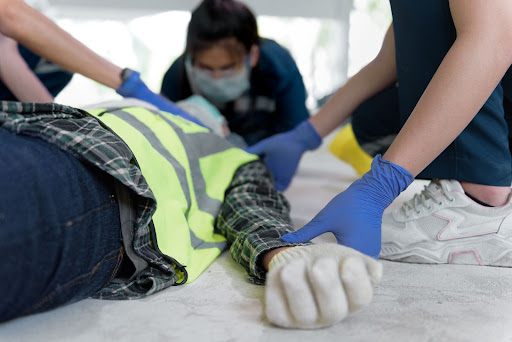What is “causation” in a personal injury case?
Personal Injury - February 12, 2022
In personal injury law, “causation” is the act of causing a crash or other incident. The person who caused the incident that directly caused your injury – the “liable” person – can be held responsible for your medical bills, lost income, and other damages that you experienced.
In order to receive compensation, your attorney must prove that the other party caused the incident, either through negligence or intentional wrongdoing. Causation is the key to winning your case, so it’s important to understand what it looks like.
Keep reading to learn the specific types of causation and how your personal injury lawyer from Horwitz, Horwitz & Associates can prove them.

Causation: Illustrating what (and who) caused your injuries
Causation is how you demonstrate that someone else is liable (responsible) for your injury. There are two types of causation (cause) under the law: factual cause and proximate cause. Let’s dive in.
Actual cause/cause in fact
Actual cause, sometimes referred to as ‘cause in fact’, is often established using the “but-for” test. You can “take” the test now by asking yourself this question:
- Would the incident have happened if the other party didn’t do what they did?
For example, would the crash have occurred if the other party hadn’t been texting and driving?
If the answer is no, the incident wouldn’t have occurred unless the defendant did what they did, there’s a good chance that the other party is liable under actual cause.
If the answer is yes, the incident would have occurred anyway, the defendant is most likely not liable.
Proximate cause/legal cause
Proximate cause, also known as “legal cause,” is the primary event that set the whole incident in motion.
For example:
| You’re crossing the street legally at an intersection. While you’re walking across, a car moves into the intersection and hits you. At first glance, it seems that the car’s movement into the intersection is the proximate cause. However, seconds before the car moved into the intersection, a semi-truck rear-ended the car, sending it forward. In this case, the semi-truck’s movement was the initial cause of the incident and is therefore the proximate cause. |
Depending on the facts of your case, the proximate cause may be the same or different from the factual cause.
The role of evidence
As the plaintiff, you and your attorney must use evidence to show that the other party’s negligence caused your injury. Thankfully, nowadays there are plenty of ways to collect evidence.
For instance, stoplight cameras could show the other driver texting a few seconds before hitting you. Eyewitnesses might have seen the driver looking down or turning to look at the backseat. All of these small details and pieces of information can amount to significant evidence when combined and could make all the difference in winning your case and compensation for your injury.
It is imperative that you collect and document as much evidence as possible regarding anything remotely related to your injury and the situation that caused it. To gain compensation for your injury, you must be able to prove that the injury was caused by the defendant’s negligence or actions.
Horwitz, Horwitz & Associates: Helping prove your case
If you are trying to prove causation in your personal injury case, you don’t have to do it alone. The experienced Chicago personal injury lawyers at Horwitz, Horwitz & Associates can help you prove and win your case so that you can get the compensation you deserve.
Call (800) 985-1819 today to schedule your free case consultation.


